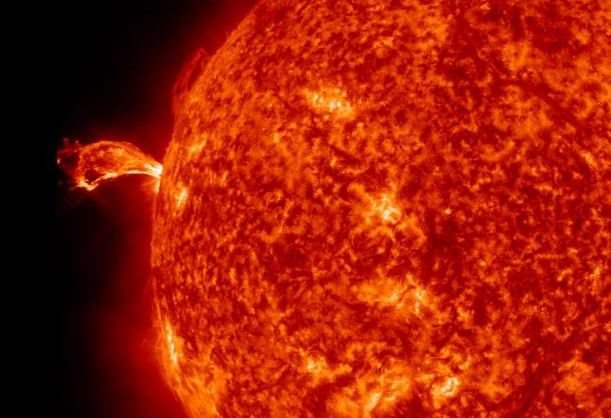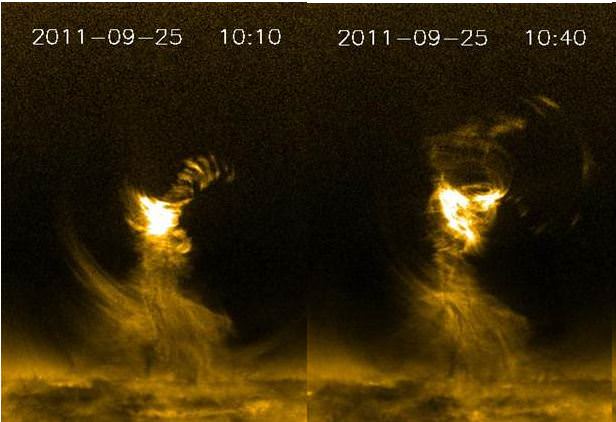The big solar flare and coronal mass ejection earlier this week created an unusual event on the Sun: it rained. Not water drops of course, but coronal rain. After the eruption, blobs of plasma fell back to the surface of the Sun, sometimes making ‘splashes’ where they hit. Coronal rain is plasma gas that condenses in the corona and then descends back to the surface. It has long been a mystery and its motion has perplexed solar physicists. For some reason, coronal rain falls much slower than is expected for plasma falling due to the huge gravitational pull of the Sun. Many times, rather than falling straight down — as it would if gravity was the only force pulling on it — the plasma rain follows invisible magnetic field lines, which can be detected by instruments on board watchful spacecraft.
This video was produced from data from the Solar Optical Telescope on NASA/JAXA’s Hinode spacecraft of the big M1/7 class flare that erupted on April 16 from Active Region 1461. Scientists say thanks to spacecraft like Hinode and the Solar Dynamic Observatory, this phenomenon can be studied in much more detail so that they can better understand this unusual event.



